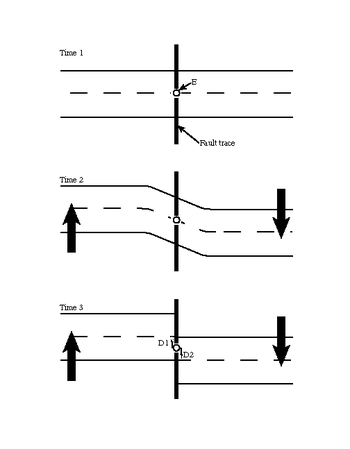Elastic-rebound theory

In geology, the elastic-rebound theory is an explanation for how energy is released during an earthquake.
As the Earth's crust deforms, the rocks which span the opposing sides of a fault are subjected to shear stress. Slowly they deform, until their internal rigidity is exceeded. Then they separate with a rupture along the fault; the sudden movement releases accumulated energy, and the rocks snap back almost to their original shape. The previously solid mass is divided between the two slowly moving plates, the energy released through the surroundings in a seismic wave.
Theory
After the great
Explanation
The two sides of an active but locked fault are slowly moving in different directions, where elastic strain energy builds up in any rock mass that adjoins them. Thus, if a road is built straight across the fault as in Time 1 of the figure panel, it is perpendicular to the
References
- ^ Reid, H.F., The Mechanics of the Earthquake, The California Earthquake of April 18, 1906; Report of the State Investigation Commission, Vol.2, Carnegie Institution of Washington, Washington, D.C. 1910
- ISBN 9780840062086.
